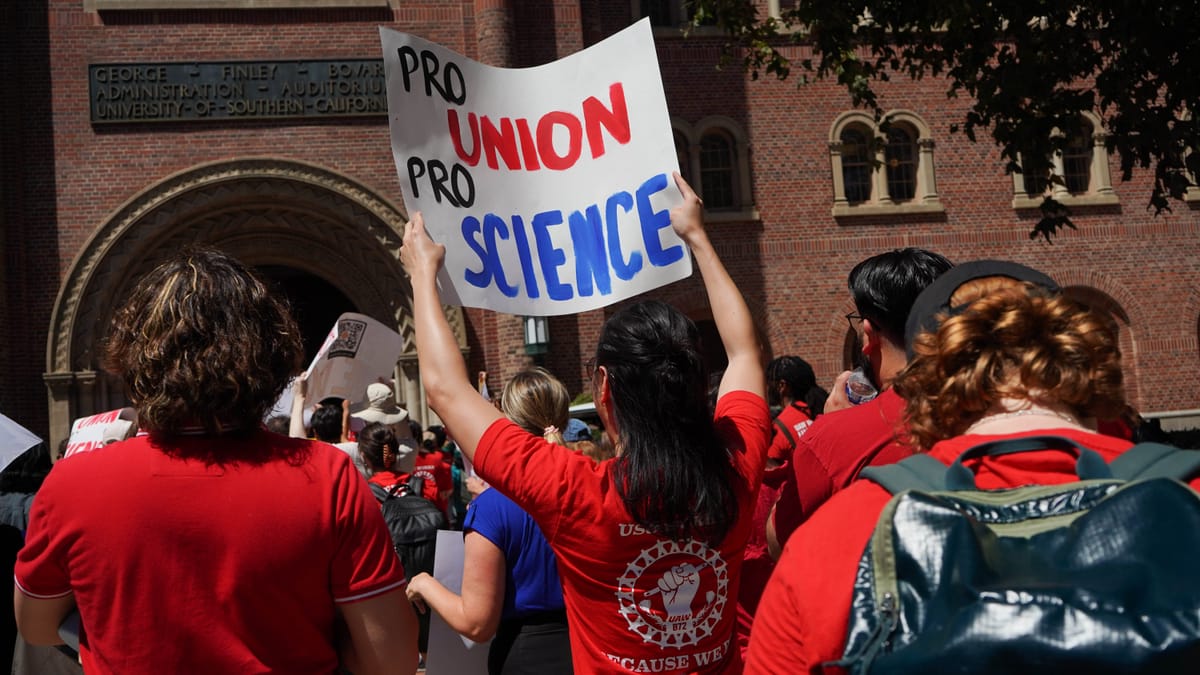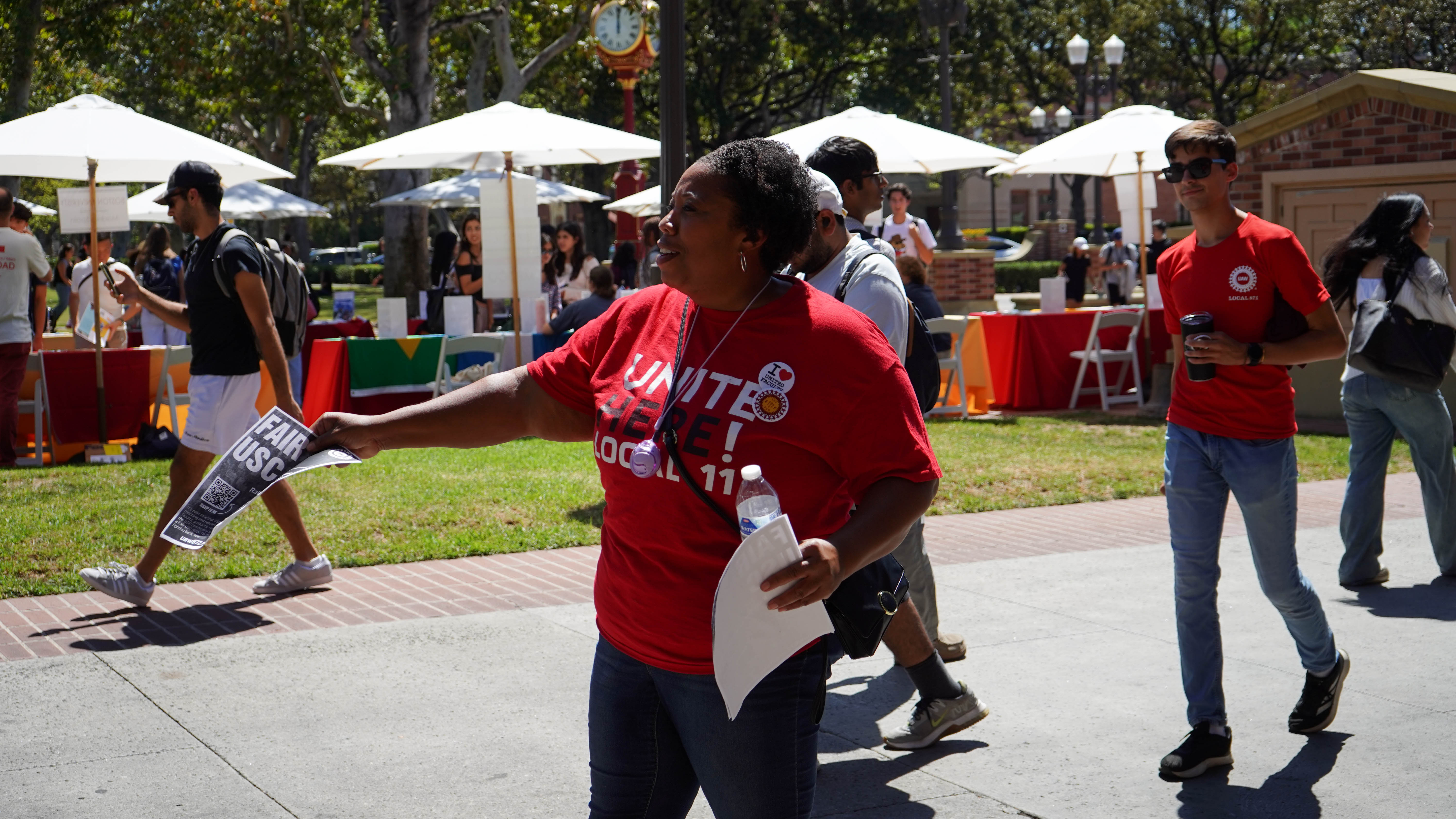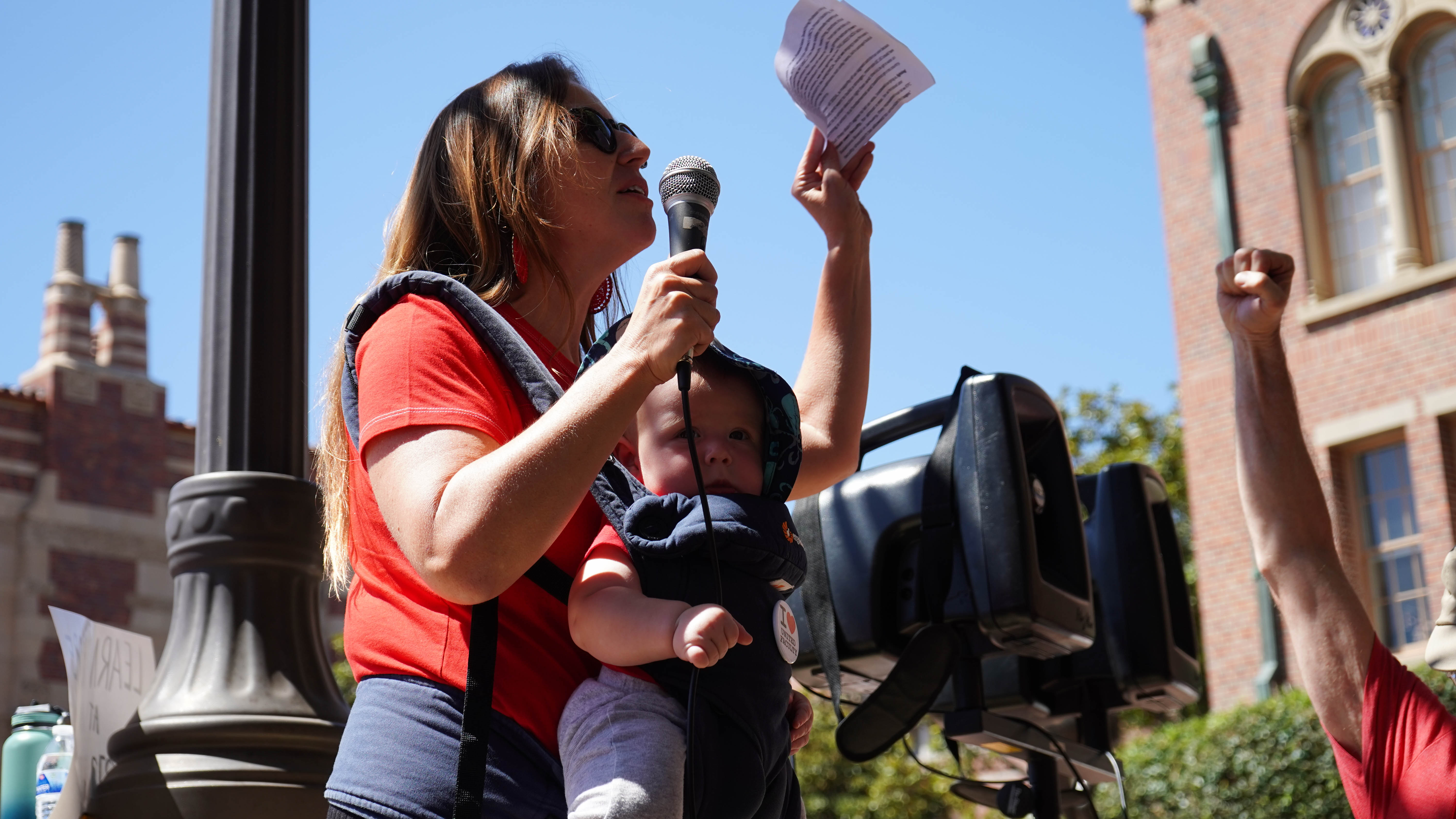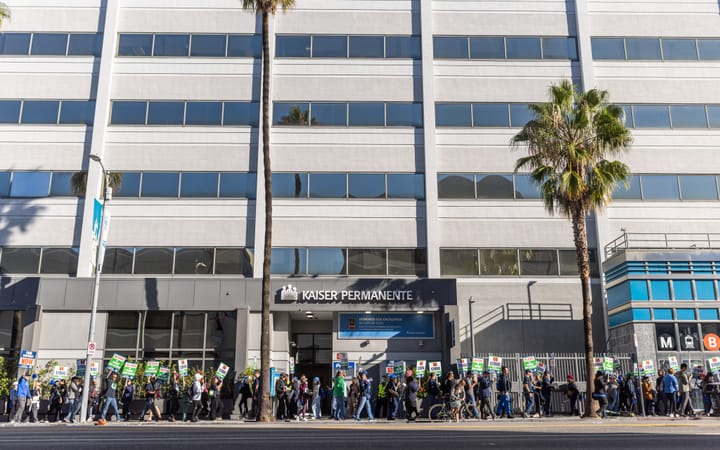In the wake of 'devastating' layoffs, USC faculty rally in support of union campaign
As layoffs continue to rock USC's campus, non-tenure track faculty are still fighting for union recognition.

On Sept. 3, over 100 non-tenure track faculty and their supporters rallied together outside the Bovard Administration building on the University of Southern California campus in Los Angeles to call attention to their continued struggle for union recognition.
A majority of thousands of eligible Research, Teaching, Practitioner, and Clinical (RTPC) Faculty workers signed cards for representation under UAW Local 872 when the campaign went public last year. The university responded by challenging workers' right to unionize, claiming that faculty members were in fact managers and ineligible for union representation. USC also joined the ranks of SpaceX, Walmart, Waffle House, and other major corporations pushing back against unionization in the workplace by claiming that the structure of the NLRB was unconstitutional. A court ruled late last month in favor of the SpaceX, et. al., and the NLRB will likely appeal this ruling in the coming weeks.

At USC, RTPC faculty are working hard to ensure that an election still happens. "Across the board, I think most faculty realize that there's a problem on campus with regards to rights of all the faculty and the conditions associated with that," said Michael Bodie, Associate Professor of Cinematic Practice at the School of Cinematic Arts at USC. "There are definitely two classes of citizen here between tenured and non-tenure track faculty. The most egregious example is about pay disparities between the two. Often it can be 30% to 40% difference in pay for full-time faculty."
Beyond the economic, faculty members are looking for better workplace conditions, including negotiations around teaching loads and the percentage of time they are allotted in order to pursue their own research and creative projects, which is something that Bodie believes makes faculty members better educators. "[Our research] informs our ability to teach these students and maintain our currency [in the classroom]," he said.
"Voting on a union and forming a union is one of the most basic fundamental rights that we have in this country."
Kate Levin, Writing Program faculty member
Recent layoffs at the university number in the hundreds since July, according to reporting by the Daily Trojan. Just last week, an additional 142 were laid off campus-wide. A number of those positions were faculty and have chipped away at the bargaining unit. Writing Program faculty and member-organizer Kate Levin called the layoffs "devastating and disgusting" in her speech to assembled crowd on campus on Sept. 3.

"In December of 2024, as many of you know, a majority of us signed cards to form a union, because we wanted and want to build a stronger, fairer, more equitable USC." Levin said. "Voting on a union and forming a union is one of the most basic fundamental rights that we have in this country," she continued.
Despite the challenges, the collective mood was high as workers gathered together for the demonstration. "This is very exciting because we are coming together for the first time this year. Multiple unions are represented here, which just shows the breadth of solidarity that we have at the moment," Bodie said. Union workers across USC also joined in support of one another, including NUHW and UNITE HERE Local 11. After the speeches concluded, workers delivered letters to the administration signed by over 1000 faculty members urging USC to not delay the election any further.
Bodie remains hopeful that the administration will set aside their challenges and come to the table willing to move forward together. "I would hope that the administration wouldn't see unionizing as confrontational, but instead as a way to work toward the mission of the university which is providing excellent education, performing excellent research, and improving both our local and global society."
Correction: A previous version of this article said that the administration received letters signed by hundreds of faculty members. That number is well over 1000, and has been corrected to reflect that.



Comments ()